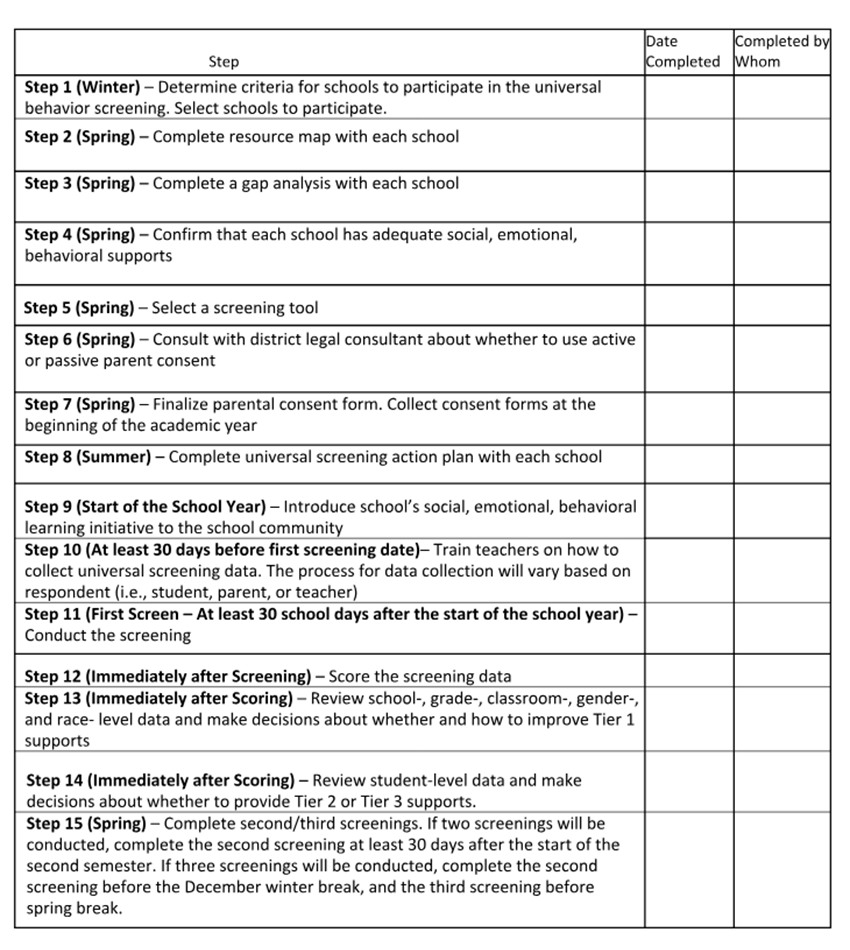Universal Behavior Screening in Schools
You are probably here because you want more resources on how to conduct universal behavior screening in schools. Universal behavior screening is a proactive process for identifying students early who may need additional emotional or behavioral support and for guiding our tiered system of supports. Adopting a universal behavior screening process may be new to school-based teams. This website describes a step-by-step process for implementing behavior screening and using the data to support students with behavioral challenges. Please reach out through the contact page if you have questions about universal behavior screening or the resources on this site.



